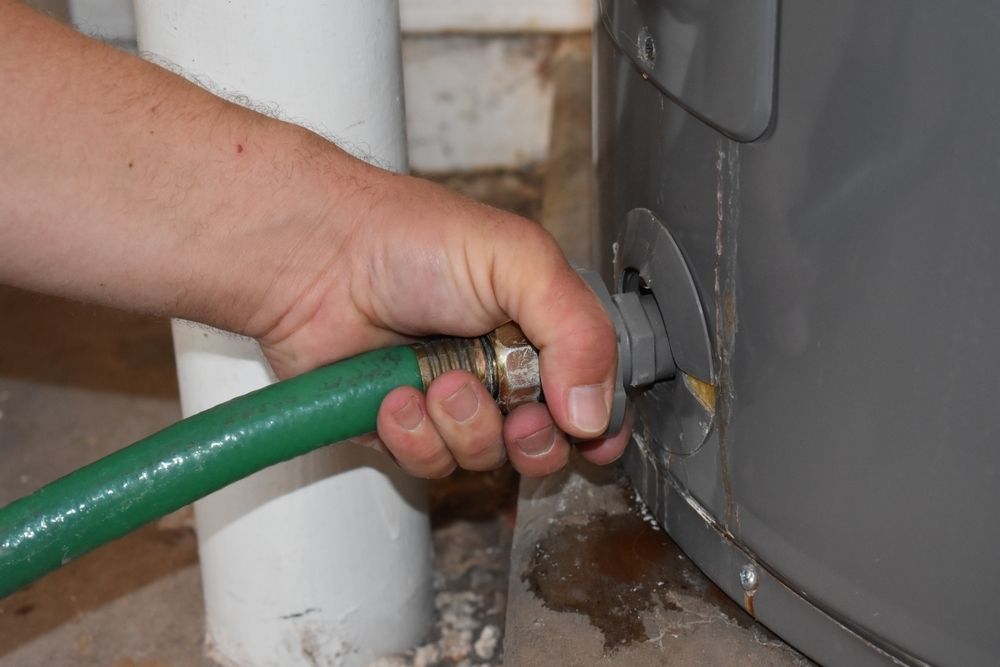How to Flush a Water Heater
 A functional water heater is essential if you like hot showers and warm baths. Flushing your water heater occasionally keeps sediment from building up inside, which can lead to damage over time.
A functional water heater is essential if you like hot showers and warm baths. Flushing your water heater occasionally keeps sediment from building up inside, which can lead to damage over time.
At Herrmann Services, we’re Cincinnati and Northern Kentucky’s trusted heating, cooling, plumbing, and electrical business. If you have trouble draining your water heater or need to replace yours, we’re happy to help.
Follow these steps to flush a water heater so you can keep yours working efficiently.
1. Gather Your Supplies
Before you begin, one of the most important steps is to gather the supplies you’ll need ahead of time. Grab a bucket or other container to collect the water as it drains and several old towels for cleanup. Grab a garden hose and a connector if your drain valve doesn’t have a hose attached. Once you’ve got the supplies you need, you can start the process of draining your water heater.
2. Turn Off the Water Heater
When researching how to drain a water heater, the first step should always be to turn it off. Gas-powered water heaters have an “off” switch on the thermostat, while electric water heaters must be turned off at the fuse box. If you can’t find the switch, check your owner’s manual.
3. Turn Off the Water Supply and Allow the Water to Cool
Once the water heater is turned off, you need to turn off the water supply. Most water heaters have a valve located at the top of the tank right before the plumbing meets the water heater. Turn it off and allow the water to cool overnight (or throughout the day if you’ll be away from home). This makes it easier to drain the tank without burning yourself with scalding water.
4. Connect the Drainage Spigot and Turn on a Hot Water Faucet
Attach a garden hose to the drainage valve if needed, and put the other end of your hose in a bucket or nearby floor drain. To prevent pressure buildup, turn on a faucet in the home that’s located above the water heater. Leave the faucet on throughout the draining process. Once the hose is in place, you can start to drain your water heater.
5. Open the Drain Valve and Drain the Water
Learning to drain a water heater may seem simple, but you must stay nearby until the process is complete. Check on things every 10 minutes to make sure there are no leaks, odd sounds, or excessive sediment. If any of these problems pop up, it may be best to call a professional.
As the water continues to drain, you should see less sediment. Eventually, the water should run clear. If it does not drain at all, that’s a common sign that it is full of sediment and you need to call in a professional.
6. Flush Your Tank
Turn on the cold water supply to flush out your tank. Let it run for a few minutes, and watch the water that comes out of the hose. This process removes the rest of the sediment particles from your water heater and allows fresh water to flow through. Once the water runs clear from the hose, the process is complete. At this point, you can turn off the cold water supply.
7. Refill Your Water Tank
Next, close the drain valve and turn the cold water supply back on. Your faucet should still be running in another room to prevent pressure from building up inside the tank. When the water from the faucet is running at full pressure, your hot water tank is full. Now, you can turn off your faucet and the cold water supply to your tank. Turn on your water heater, and your water should be nice and hot after about 30 minutes.
Get Help From the Water Heater Pros at Herrmann Services
If you have questions about how to flush a water heater or if your water heater requires repair or replacement, call Herrmann Services today. Our family-owned business has been around for three generations, and we’ve got over 50 years of experience in the industry. Trust our crews to handle your plumbing needs with professionalism and care. We’re proud to serve our neighbors throughout the Greater Cincinnati area and Northern Kentucky.
Featured Image: Angela Feltes / Shutterstock